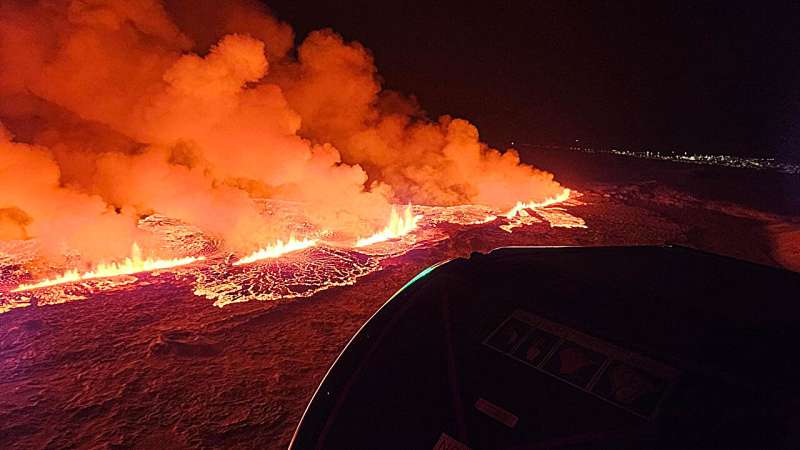This article has been reviewed according to Science X's editorial process and policies. Editors have highlighted the following attributes while ensuring the content's credibility:
fact-checked
peer-reviewed publication
trusted source
proofread
In rare opportunity, researchers observe formation of Icelandic valleys

On 10 November 2023, authorities evacuated the city of Grindavík on Iceland's Reykjanes Peninsula. Months of seismic turbulence and other signs of an impending volcanic eruption (which would not actually occur until December) had come to a head with rapid-fire earthquakes and dramatic reshaping of the ground—including faults that cracked through roads, pipelines, and houses.
The events of 10 November also included the abrupt formation of two shallow valleys known as grabens. These geological features form when tectonic forces pull Earth's crust apart along parallel normal faults (which typically dip toward each other like the sides of a funnel) and the land between the two faults drops down.
Grabens can also be caused by magmatic activity. They are common worldwide and even on other planets and the moon, but scientists rarely have the opportunity to observe their creation.
In this case, however, researchers were poised to document the sculpting of the new grabens in real time and with unprecedented precision. In a new study published in Geophysical Research Letters, Gregory De Pascale and colleagues report how the event unfolded, using data from seismic stations, radar-based satellite mapping, ground-based devices that record surface movement relative to satellites, field mapping, and drone-based lidar and imaging surveys.
The data revealed that the grabens mostly formed in a matter of hours, coinciding with the day's swarm of seismic activity. The new graben system consists of two valleys on either side of an elevated horst, along with five normal faults and about 12 fissures that broke through Earth's surface.
Altogether, the system displays nearly 3 meters of vertical displacement and is about 4.5 kilometers wide. This is notably wider than most other known grabens, which tend to be less than 1 kilometer wide.
The team's analysis indicates that tectonic activity, rather than subsurface magma movement, was the primary driver of the formation of the new grabens. However, the researchers suggest that the faults between the new grabens can serve as pathways for magma migration and may have contributed to a series of eruptions in the grabens from December 2023 to May 2024.
Overall, according to the authors, this study provides new insights into the formation of grabens and could improve understanding of their formation and role at similar sites on Earth and on other planets.
More information: Gregory P. De Pascale et al, On the Move: 2023 Observations on Real Time Graben Formation, Grindavík, Iceland, Geophysical Research Letters (2024). DOI: 10.1029/2024GL110150
Journal information: Geophysical Research Letters
Provided by American Geophysical Union
This story is republished courtesy of Eos, hosted by the American Geophysical Union. Read the original story here.



















